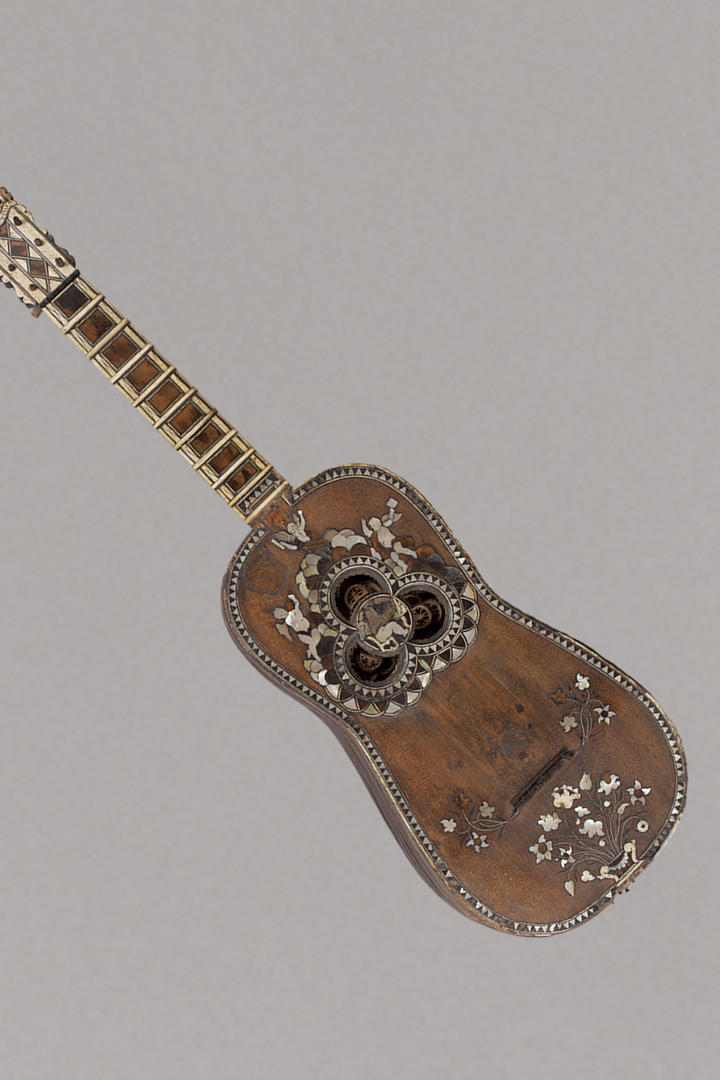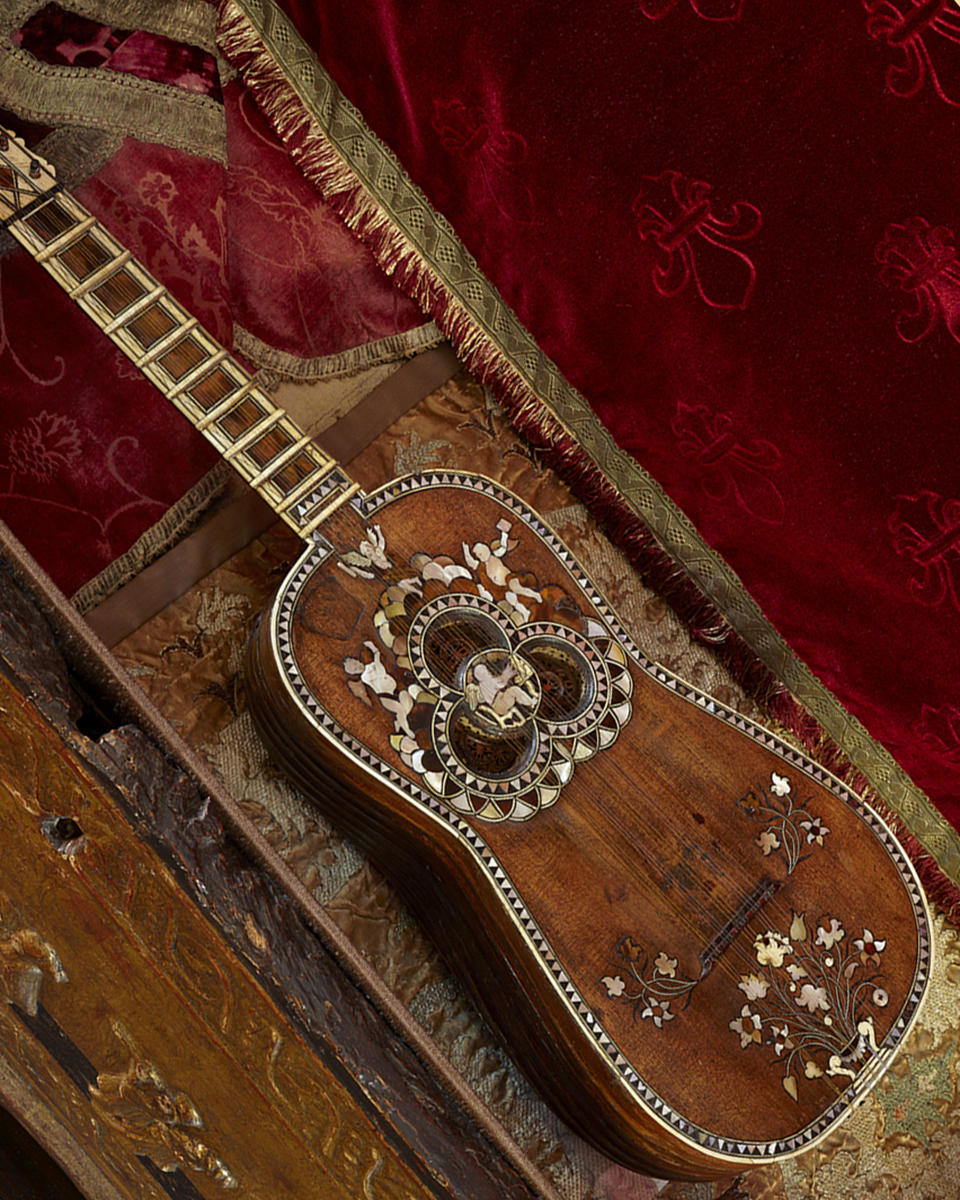Gardner Museum conservation staff used modern technologies to learn more about the past of a rare 18th-century musical instrument in an effort to restore it to its previous beauty.
A RARE AND PRECIOUS OBJECT
The Museum’s collection contains an ornate guitar made in Perugia in the 1720s. Constructed of wood and inlaid with bone, tortoise shell and mother of pearl, the 14-string guitar was created by Jacopo Mosca Cavelli. The guitar is an example of a chitarra battente, a metal stringed instrument often associated with street musicians. Heraldic devices suggest that Cavelli may have made it for a member of an aristocratic Roman family.
THE SOUND
What makes the guitar more unusual is that it’s one of only two known in museum collections to be from the hand of Cavelli. The Gardner Museum's Cavelli guitar can’t be played due to previous damage causing a delicate connection between the body and neck of the instrument. But a sister guitar in the collection of the Museum of Fine Arts Boston has been restored so that it can be played.
Ludovico Roncalli, Passacaglia, 1692

CENTURIES OF DAMAGE
In 2016, the Gardner Museum’s conservators undertook a serious effort to restore the guitar, which had been badly damaged over the centuries. Portions of the inlay of cherubs and flowers had been lost. And the guitar’s neck and sides had an unappealing, old restoration, possibly after the neck had been damaged. The wood finish of the guitar had also become dull.
LOOKING WITHIN
Prior to its restoration, the Conservation staff took the Cavelli guitar to two local hospitals for a CT scan and an endoscopy in order to reveal the structural components, and understand how it was manufactured and, later, repaired. This technology-assisted viewing was necessary because there is no other way to see the inside of the instrument due to decorative lattice that covers the sound hole.

THE CT SCAN
The first step was a CT scan at Massachusetts General Hospital, which provided 1,600 images of the guitar’s interior. Conservators and instrument-makers watched as images appeared on a monitor. They tried to puzzle out how the guitar had been repaired in the past, as well as its current structural condition.

THE ENDOSCOPY
Next, the group donned hairnets and lab coats for the endoscopy, in which a small probe was inserted in the side of the instrument. The results revealed centuries of dust and an important paper label. While some parts were obscured, they could make out “Mosca XXX Fecit 172X”. (Mosca XXX made this 172X). Paper strips of manuscript and music pages that lined the interior like papier mâché could also be seen.

The endoscopy takes place at Boston Medical Center
The culprits are often the same—Light, dust, climate, and previous restorations… We use scientific analysis to understand how the piece is made and the exact nature of the damage, and use the latest tools and techniques to do the repair—while not undoing anything in the process.
— Holly Salmon, John L. and Susan K Gardner Director of Conservation
Use the slider to view the guitar before and after its restoration.
RESTORING THE RAPHAEL ROOM
The restoration of the guitar is just one small part of an ambitious multi-year project to renovate and restore the Raphael Room to its original splendor, as envisioned by Isabella Stewart Gardner. Funding for the Raphael Room Restoration has been generously provided by the Amelia Peabody Charitable Fund, as well as the Massachusetts Cultural Facilities Fund, a program for the Commonwealth of Massachusetts, administered through a collaborative arrangement between MassDevelopment and the Massachusetts Cultural Council. Sarah and Josh Greenhill also have generously supported this Restoration.


